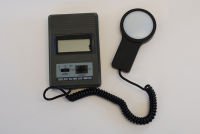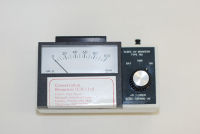Light is a common cause of damage to library and archival material. It can cause paper to yellow or darken and weaken and embrittle the cellulose fibres that make up paper. It can also fade or change the colour of inks and dyes used in paper, photographs and art works. This visible form of light damage is also an indication of physical and chemical deterioration of the structure of the material. Textiles, parchment and leather also suffer from prolonged exposure to light. Sadly, light damage is cumulative and irreversible.
Light sources
All kinds of light sources are harmful, and exposure to both natural and artificial light can cause serious damage to books and documents. Not only will inks and colours fade, but paper and binding materials will also deteriorate. The amounts of both visible light and of ultraviolet emissions from the sun and fluorescent lighting will need to be controlled to reduce this damage. The wavelength and duration of exposure collectively determines the rate of deterioration; ultraviolet light is particularly damaging.
Levels of visible light should be controlled to ensure the most effective balance between the needs of the readers and the need to minimise light damage to the archive. This can be done by using window blinds; keeping exposure time to a minimum; returning and storing material in boxes when not in use; and switching lights off when areas are unoccupied.
Ultraviolet (UV) light should be eliminated or reduced to a minimum where possible. Control can be applied with the use of UV screening filters on windows and any other light source including fluorescent lights.
Care of exhibition items
 When displaying records or books, light levels and time exposure in the exhibition cases and display area must be measured and controlled. This is best accomplished by displaying items in a windowless room, reducing the overall amount of artificial light to the barest minimum and incorporating UV absorbing filters into the display glazing. If illumination is necessary then lighting must be carefully chosen and sited outside of the display unit so as not to cause a heat gain inside. Exposure to light should be reduced by covering the exhibition case out of hours if the lights have to be left on. It should be remembered though that all light falling on an object for any length of time will cause damage.
When displaying records or books, light levels and time exposure in the exhibition cases and display area must be measured and controlled. This is best accomplished by displaying items in a windowless room, reducing the overall amount of artificial light to the barest minimum and incorporating UV absorbing filters into the display glazing. If illumination is necessary then lighting must be carefully chosen and sited outside of the display unit so as not to cause a heat gain inside. Exposure to light should be reduced by covering the exhibition case out of hours if the lights have to be left on. It should be remembered though that all light falling on an object for any length of time will cause damage.
How to measure light levels
 A light meter measures the level of visible light in lux (lumens per square metre). The meter should be placed close to the object exhibited, facing the light just as the object does to get an accurate reading. As a guide the reading should not exceed 50 lux.
A light meter measures the level of visible light in lux (lumens per square metre). The meter should be placed close to the object exhibited, facing the light just as the object does to get an accurate reading. As a guide the reading should not exceed 50 lux.
A UV meter is used to measure the UV proportion of ultra violet in visible light. This is measured in microwatts per lumen (µW/l). The reading should not exceed 75µW/l.
The problem of light exposure while viewing or displaying archives is a difficult one to overcome. It is important to understand the access limitations of light sensitive objects and by doing so it is possible to set out a framework of guidelines within which the archives can continue to be safely used and enjoyed.

